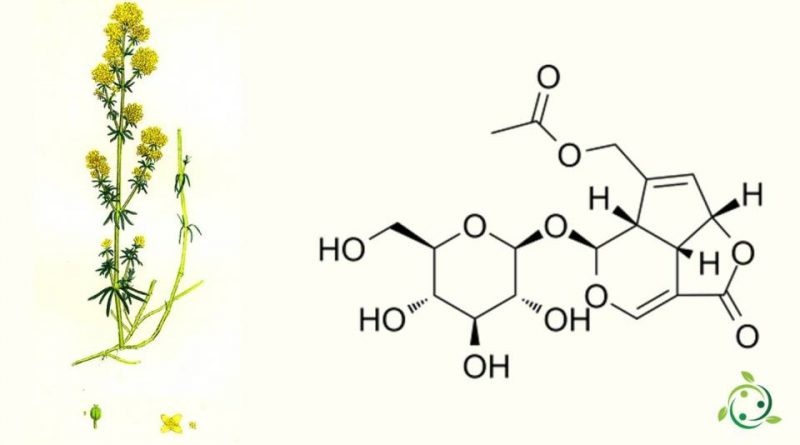Asperuloside
Asperuloside
Asperuloside, whose term in the official IUPAC nomenclature is: [(4S, 7S, 8S, 11S) -2-oxo-8 – [(2S, 3R, 4S, 5S, 6R) -3,4,5-trihydroxy -6- (hydroxymethyl) oxan-2-yl] oxy -3,9-dioxatricyclo [5.3.1.04,11] undeca-1 (10), 5-dien-6-yl] methyl acetate, is an iridoid monoterpenoid.
Asperuloside has a brute or molecular formula: C18H22O11 and was isolated in nature from the yellow bedstraw plant (Galium verum L., 1753), a herbaceous, perennial plant with small yellow flowers, belonging to the Rubiaceae family.
Chemically it is an iridoid monoterpenoid, a beta-D-glucoside, a monosaccharide derivative, an acetate ester and a gamma-lactone.
Asperuloside is a component of traditional Chinese herbal medicine. Asperuloside is extracted from many traditional Chinese medicinal plants, including Herba Paederiae, Asperula odorata, Goldhair Hedyotis Herb, and Hedyotis diffuse. It has been shown that there are many types of pharmacological effects, including anticancer and antiobesity activities.
Asperuloside can significantly reduce tumor necrosis factor alpha (TNF-α), interleukin (IL) -1β, and IL-6 levels in vitro and in vivo, and asperuloside treatment significantly reduced wet-to-dry weight of the lungs, histological changes and myeloperoxidase activity in a mouse model of LPS-induced acute lung injury (ALI).
Asperuloside exerts its anti-inflammatory effect in correlation with the inhibition of a proinflammatory mediator through the suppression of nuclear translocation of nuclear factor kappa-B (NF-kB) and of MAPK phosphorylation.
Asperuloside may be a potential treatment for ALI and can be used as a clinical anti-infective drug.
Warning: The information shown is not medical advice and may not be accurate. The contents are for illustrative purposes only and do not replace medical advice.

